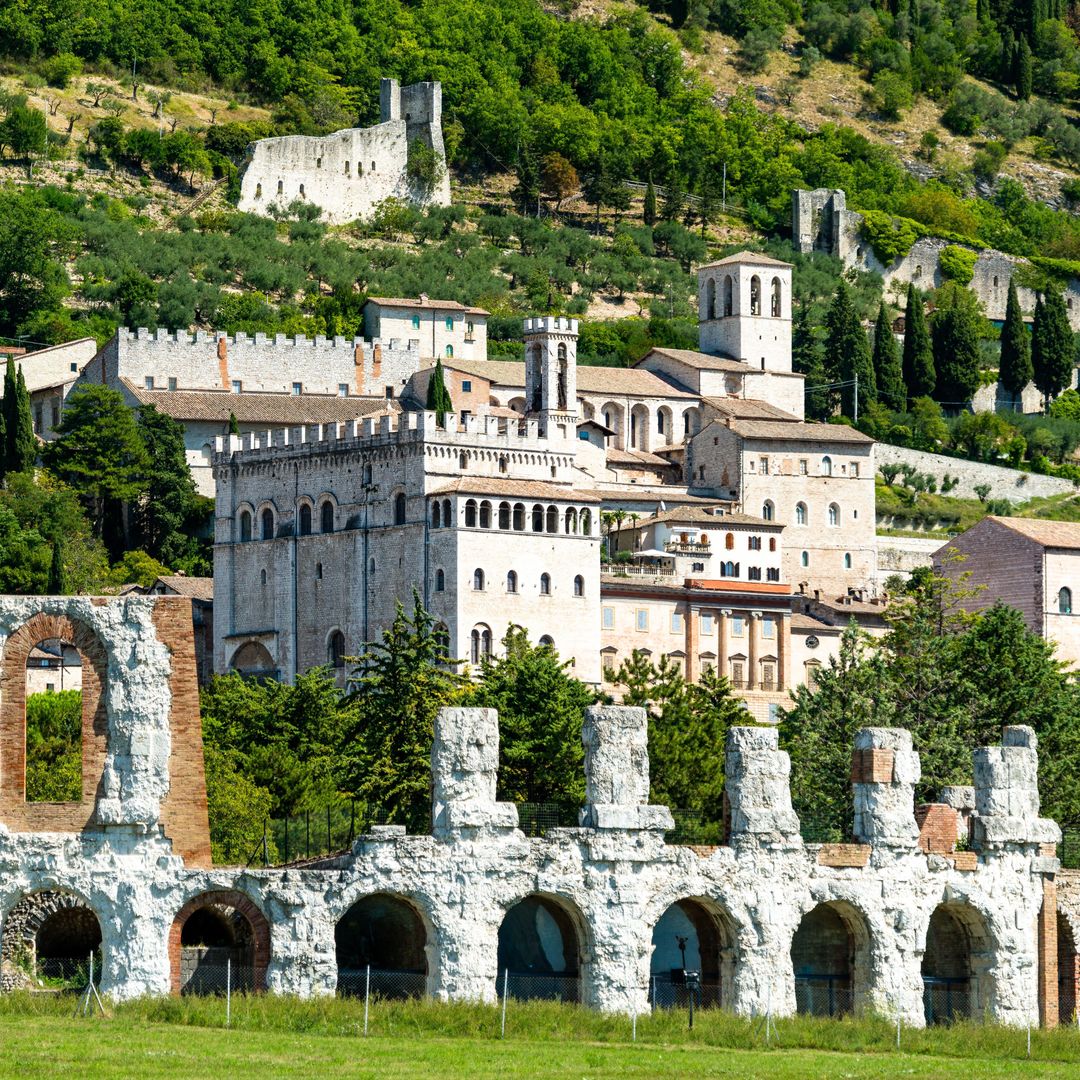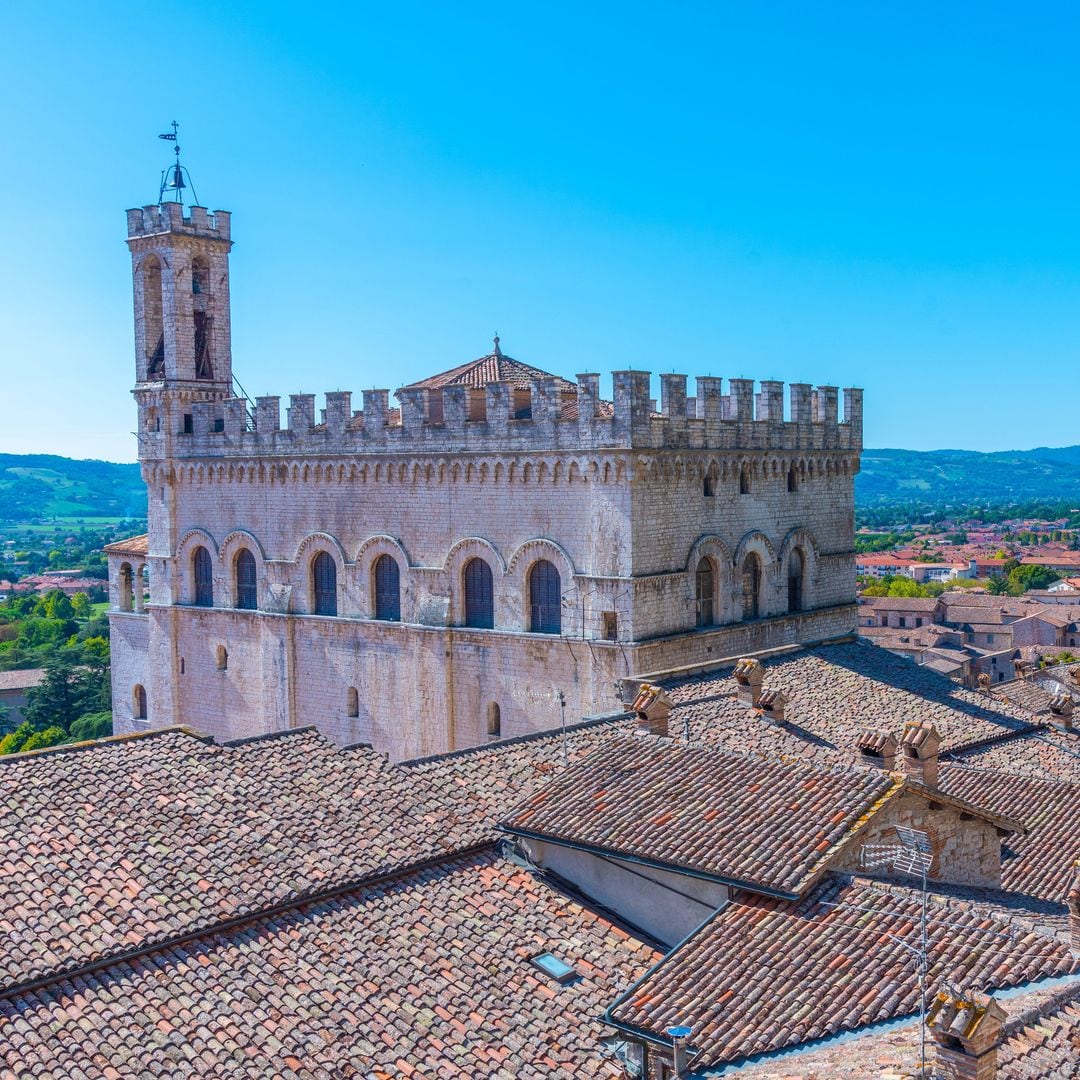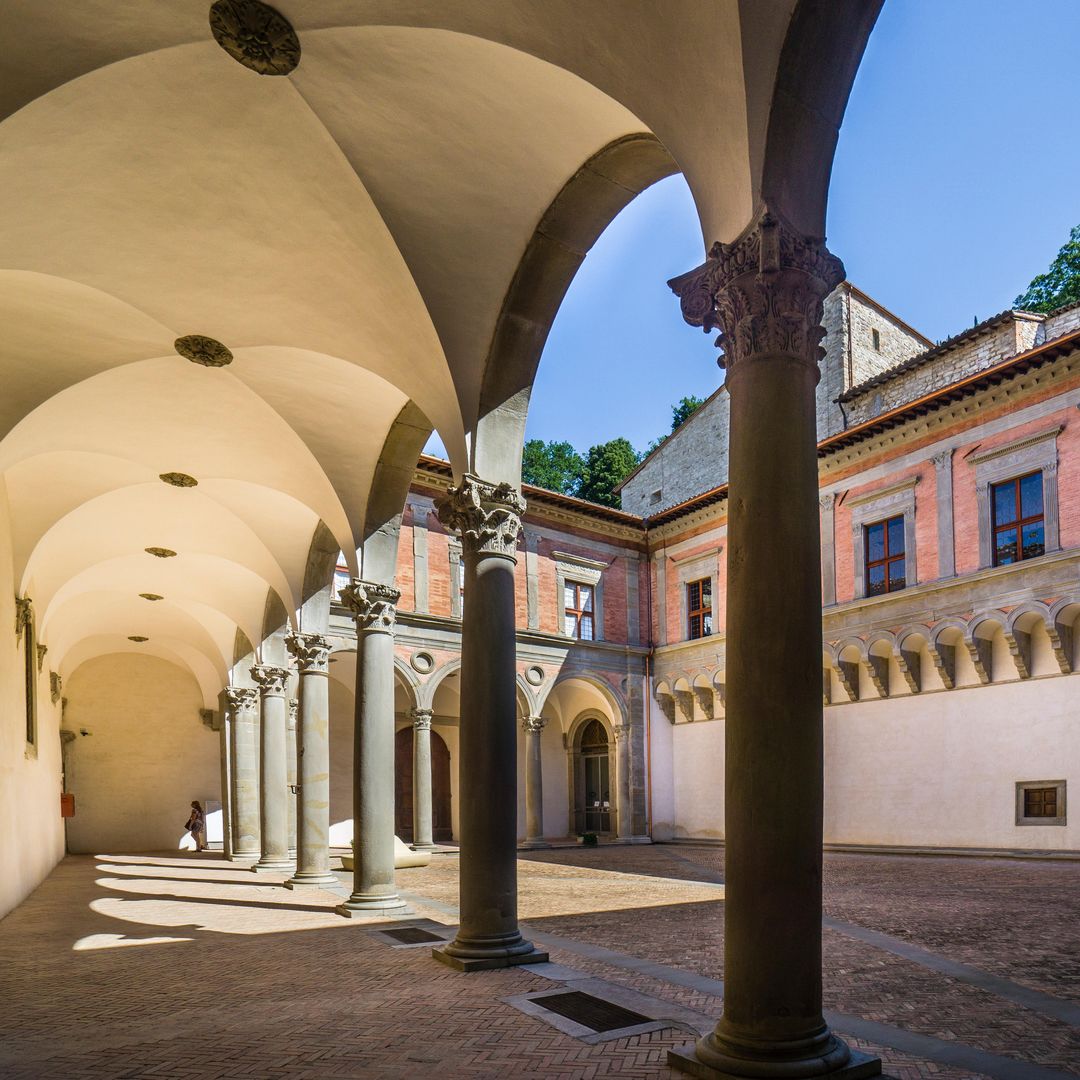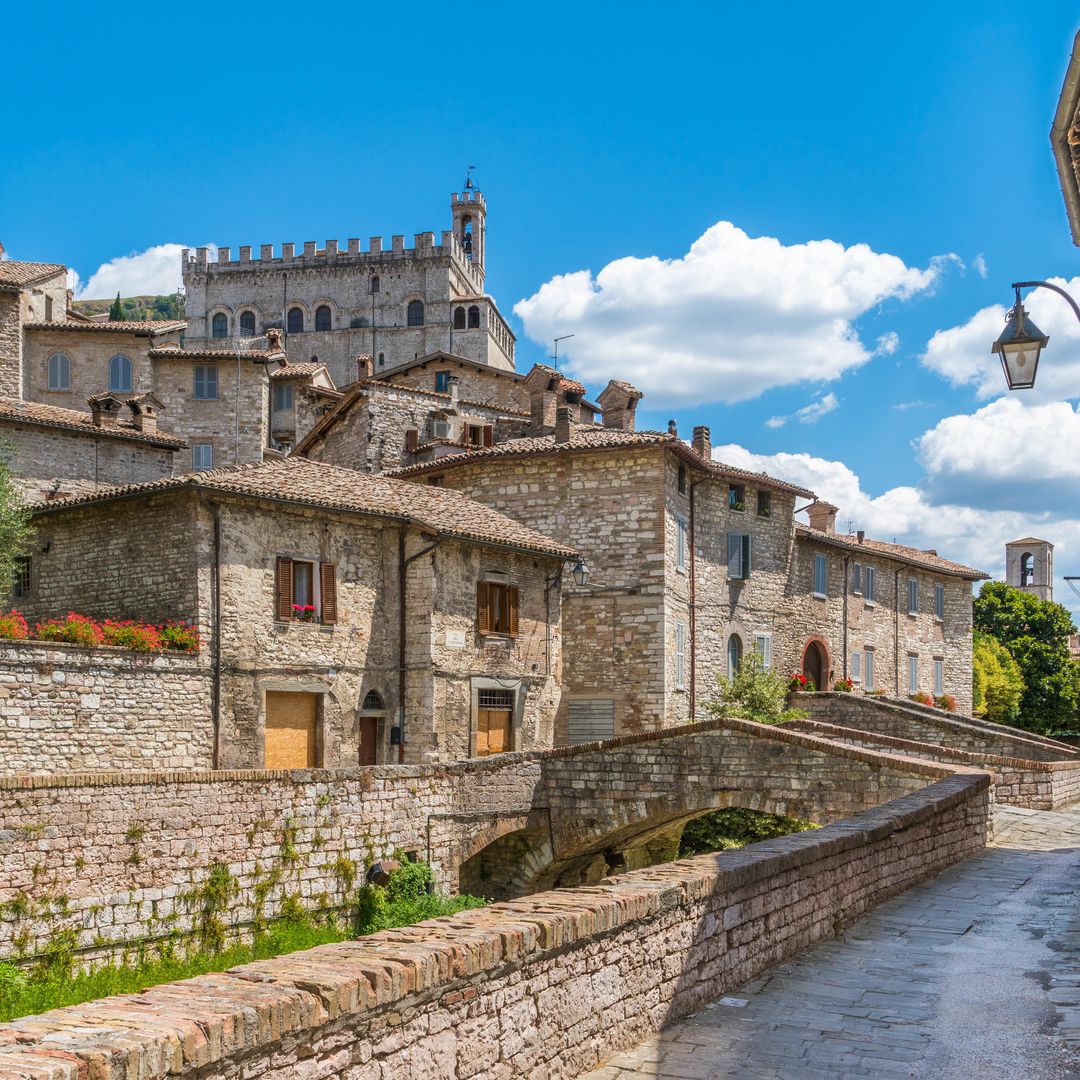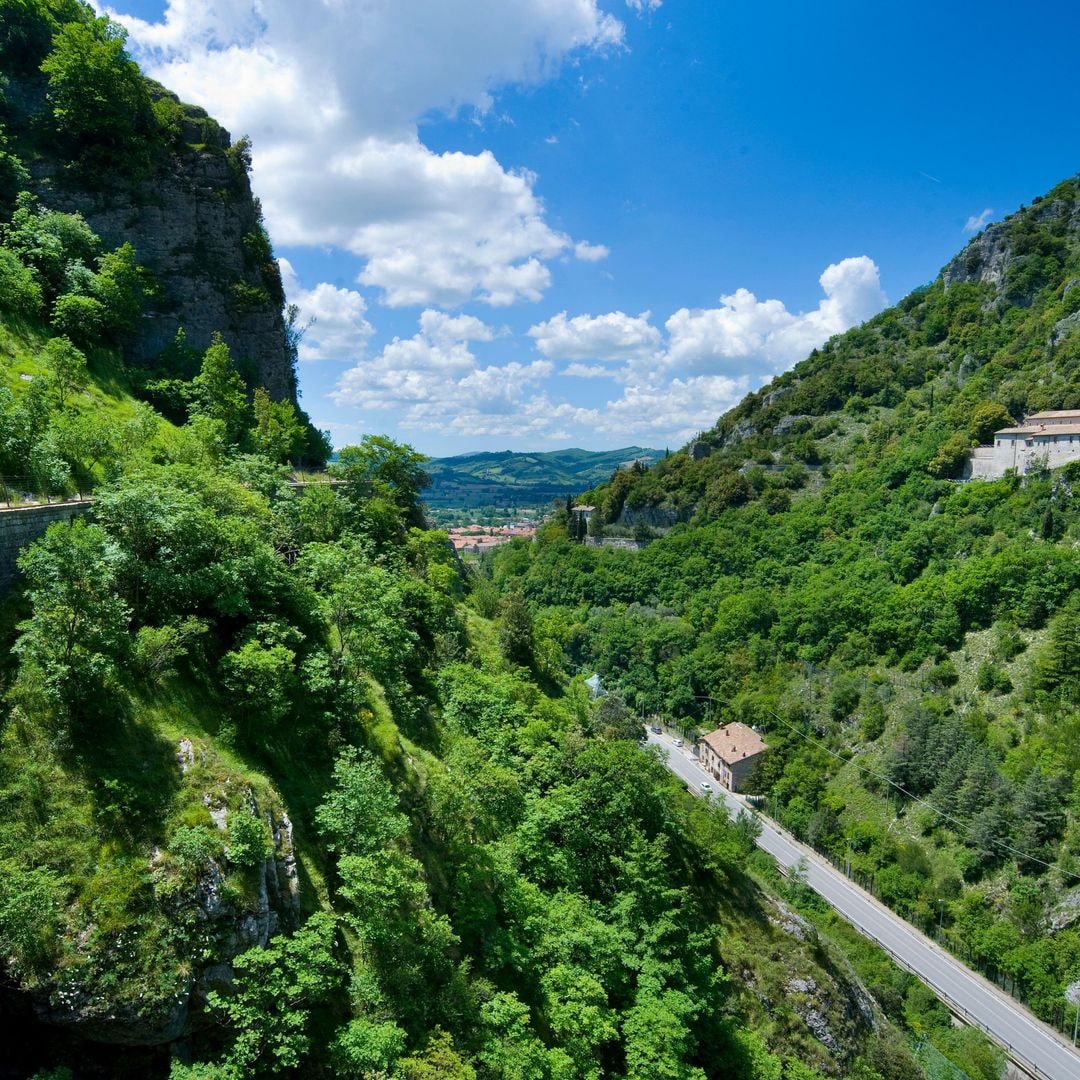Umbria is the other Tuscany, for its soft, green mountains, its yellow fields of sunflowers, the Apennines on the horizon and that collection of towns with a medieval essence and calm rhythm. It is the landscape that surrounds Gubbio, the “stone city” and the oldest in the region, which It is not as sonorous as other Italian classics, but it is also full of art and medieval charm. Located 170 kilometers from Florenceat the foot of Mount Ingino and crossed by the Camignano River, a walk through its labyrinth of narrow streets and cobbled alleys reveals its long history.
Two monuments, above all, reveal that Gubbio was not born yesterday: the Roman amphitheater and the Eugubina tables, a set of seven bronze tablets dating back to the 3rd-1st centuries BC that are key to the understanding of the ancient Umbrian language and are found in the rooms of the municipal museum located in the palazzo dei Consoli (consuls).
If magnificent is this building, with a spectacular façade that dominates any perspective of the city, splendid and a large balcony with arches is the imposing Piazza della Signoria, which one looks out, delimited by another palace, that of the Praetorium. In the Duomo (cathedral) of Santi Mariano e Giacomo, with a single nave interior, you can see interesting works by Nucci and Ghepardi, a Pietà signed by Dono Doni and the Madonna del Belvedere by Octavio Nelli.
Before reaching the cathedral, stop to admire the Ducal Palace of the Montefeltro, work of the Italian Renaissance that has a wonderful interior patio and whose studiolo (semi-private apartment dedicated to study and meditation) of the Duke has been reproduced identical to the original, exhibited in the Metropolitan Museum in New York. Or let’s see the Matti fountain, in front of the Bargello palace, and do the required three laps around it to get the ‘crazy’ certificate, which is what it means matti.
Gubbio has also a handful of interesting churches within the old medieval walls which you have to pass, such as San Francesco and Santa Maria Nuova, San Giovanni Battista and the basilica dedicated to San Ubaldo, the patron saint, accessible by cable car, as it crowns the top of the mountain who watches over the city.
But art is also discovered as one walks through the historic centerbecause in its alleys that go up the mountain and connected with stairs and elevators –Baldassini, via dei Consoli, Galeotti…– they open the doors numerous craft workshops where you can buy ceramics, leather, iron, gold and fine embroidery, a tradition from ancient times that is passed down from generation to generation.
In Gubbio, craftsmanship has merit and is the pride of the city. You can see it by passing by the Porta Romana Ceramics Museum, by the schools for young people dedicated to production of lutes and violins and restoration of wooden furniture, in many of the blacksmith shops scattered throughout the historic center where artisans reinterpret with touches art nouveau and art deco the traditional gothic-renaissance forms, in the very long loggia dei Tiratori, where the weavers spread the newly woven wool cloths and, at Christmas, seeing the tree that is built on the side of Mount Ingino and that appears in the Guinness Book of Records for being the largest in the world.
And since walking whets your appetite, you’ll have to try Gubbio’s cuisine, scented by the intense aroma of white truffle which is used as a condiment for all pastas and which, even today, is produced strictly respecting ancient techniques. You will gain strength to then visit the surroundings Bottaccione gorges and the monastery of Sant’Ambrogio, which shows frescoes in its church and caves in its basement.



